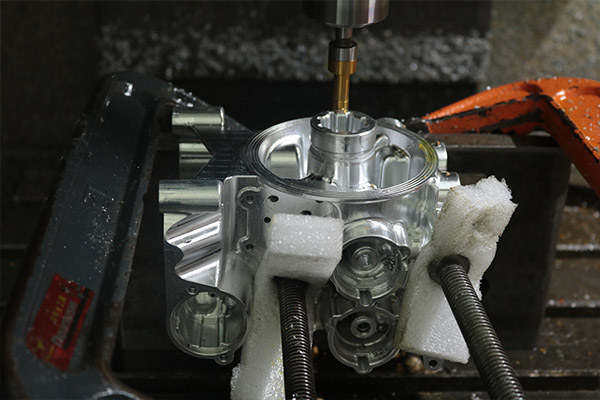Get in touch.
Dear,I will reply in 12 hours. All your message are protected!
Rapid Prototyping Services, Professional manufacturer of CNC Prototyping and 3D Prototyping in China.
Introduction:
Machine machining and simple molds play vital roles in the manufacturing industry. These techniques are widely used to produce precise and intricate components, facilitating the creation of various products. In this article, we will explore the fundamentals of machine machining and delve into the significance of simple molds in the manufacturing process.

Machine Machining:
Machine machining, also known as machining or subtractive manufacturing, refers to the process of shaping raw materials into finished parts by removing excess material. It involves the use of various machines, such as lathes, milling machines, and CNC (Computer Numerical Control) machines. Machine machining offers several advantages, including high precision, repeatability, and the ability to work with a wide range of materials, such as metals, plastics, and composites.
Machining processes typically involve the following steps:
1. Design: The desired component is first designed using computer-aided design (CAD) software. This step includes specifying dimensions, tolerances, and other specifications.
2. Material Selection: The appropriate material is chosen based on the component's requirements, considering factors such as strength, durability, and cost.
3. Setup: The machine is set up with the required tools and fixtures for the machining operation.
4. Machining: The machine removes excess material from the workpiece using cutting tools, such as drills, end mills, or lathe tools. This step can include operations like turning, milling, drilling, and grinding.
5. Finishing: After the machining process, the finished part may undergo additional processes, such as polishing, deburring, or surface treatment, to achieve the desired final appearance and functional characteristics.
Simple Molds:
Simple molds are an essential tool in manufacturing processes, particularly in industries such as plastics, ceramics, and metal casting. A mold is a hollow cavity into which molten material is poured or injected, allowing it to solidify into the desired shape. Simple molds are often used for producing low to medium volume parts, prototypes, or components with relatively straightforward geometries.
Advantages of simple molds include cost-effectiveness, shorter lead times, and the ability to replicate parts accurately. They are typically made from materials like silicone, polyurethane, or aluminum, depending on the application requirements.
The process of using a simple mold can be summarized as follows:
1. Mold Design: The mold design is created based on the desired part's specifications, incorporating features like draft angles, parting lines, and gating systems.
2. Mold Fabrication: The mold is fabricated using techniques like CNC machining, 3D printing, or traditional mold-making methods. The choice of fabrication method depends on factors such as complexity, material, and budget.
3. Material Preparation: The material, such as molten plastic or metal, is prepared according to the mold requirements.
4. Mold Filling: The prepared material is poured or injected into the mold, filling the cavity.
5. Solidification and Ejection: The material solidifies within the mold, taking the shape of the cavity. Once solidified, the part is ejected from the mold.
Conclusion:
Machine machining and simple molds are indispensable processes in modern manufacturing. Machine machining enables the creation of complex and precise components, while simple molds provide a cost-effective solution for producing parts with simpler geometries. These techniques, combined with advancements in technology and materials, continue to drive innovation and enhance manufacturing capabilities across various industries.
© 2005-2025 Shenzhen Tuowei Model Technologies Co., Ltd. | All Rights Reserved 粤ICP备11096697号